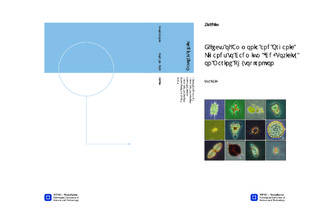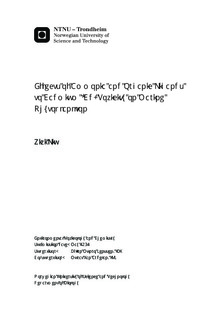| dc.contributor.advisor | Jenssen, Bjørn Munro | nb_NO |
| dc.contributor.advisor | Ardelan, Murat Van | nb_NO |
| dc.contributor.author | Liu, Xixi | nb_NO |
| dc.date.accessioned | 2014-12-19T13:12:30Z | |
| dc.date.available | 2014-12-19T13:12:30Z | |
| dc.date.created | 2012-06-21 | nb_NO |
| dc.date.issued | 2012 | nb_NO |
| dc.identifier | 536491 | nb_NO |
| dc.identifier | ntnudaim:6821 | nb_NO |
| dc.identifier.uri | http://hdl.handle.net/11250/245025 | |
| dc.description.abstract | The effects of ammonia to Cd toxicity on marine phytoplankton have been studied. The phytoplankton biomass was significantly increased at higher ammonia flux after high Cd level exposure, which indicated high ammonia decreased Cd toxicity on phytoplankton. In addition, DGT labile Cd concentration was linear decreased with increasing ammonia flux in day 8, while DGT labile Cd concentration was increased at higher ammonia flux in day 12. Cd complexation capacity in seawater of Cd treatment was higher over 100 times than Cd complexation capacity in seawater of without Cd treatment. And high ammonia increased Cd complexation capacity in seawater after high Cd exposure in day 8, while Cd complexation capacity in seawater of Cd treatment was decreased due to high ammonia in day 12. Therefore, ammonia influences the amount of DOM released by phytoplankton and the Cd complexation with organic ligands, and finally leads to affect Cd bioavailability and toxicity on phytoplankton. | nb_NO |
| dc.language | eng | nb_NO |
| dc.publisher | Institutt for biologi | nb_NO |
| dc.subject | ntnudaim:6821 | no_NO |
| dc.subject | MSENVITOX Environmental Toxicology and Chemistry | no_NO |
| dc.subject | Environmental Toxicology | no_NO |
| dc.title | Effects of Ammonia and Organic Ligands to Cadmium (Cd) Toxicity on Marine Phytoplankton | nb_NO |
| dc.type | Master thesis | nb_NO |
| dc.source.pagenumber | 114 | nb_NO |
| dc.contributor.department | Norges teknisk-naturvitenskapelige universitet, Fakultet for naturvitenskap og teknologi, Institutt for biologi | nb_NO |

